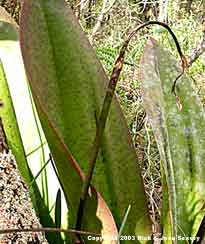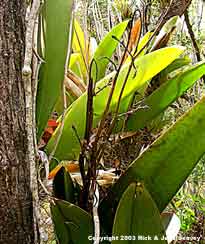| Mule Ear Orchid New Fly Association Photos Index | ||
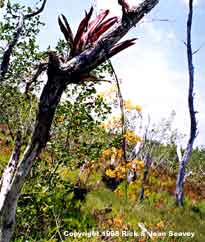 |
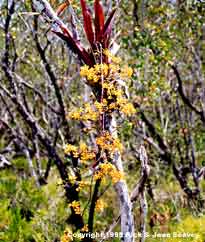 |
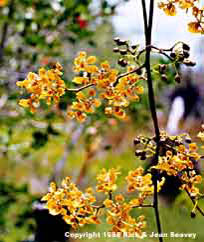 |
|
Mule ear orchid, Trichocentrum undulatum, is rare in the U. S. where it is only found in the Flamingo area of Everglades National Park. It grows in equally rare (probably) buttonwood forests. Although many plants live in this restricted area, this was the only one to flower in 1998. Non typical red leaves are due to its growing in full sun. |
||
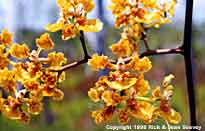 |
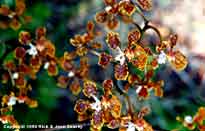 |
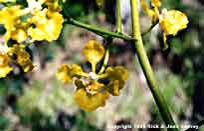 |
|
Close-up of above plant's flowers. These are lighter than usual, perhaps due to sunny, open location. |
Typical color of Flamingo's mule ear orchid flowers. |
This flower is a rare albino. It is much lighter than the other two and without brown ornamentation. |
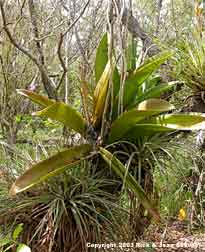 |
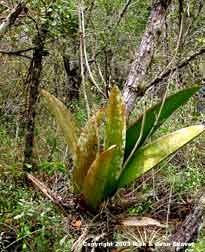 |
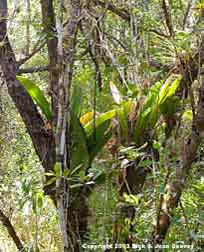 |
|
These plants illustrate the typical green leaves of plants growing within the buttonwood (Conocarpus erectus) forest. They are epiphytic, often growing among air plants such as stiff-leaved wild pine, Tillandsia fasciculata, shown in the above, left photo (to the lower left under the orchid). Plants are found high in trees or near ground. |
||
|
|
|
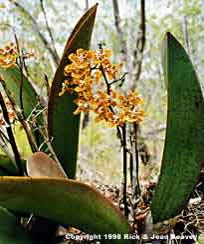 |
|
A fly, Melanagromyza miamensis, oviposites its eggs into the stalk where the larvae develop, later to emerge as adult flies. If ovipositing occurs below the 5th node, it usually kills the stalk. If entered above 5th node, the plant generally develops side branches which are also attacked by the fly. This leads to either no flowers or an atrophied flower stalk (illustrated middle & right photos). One year only two plants flowered of 200 we followed. |
||
|
Once we hatched the fly from a flower stalk an entomologist friend, Ron Clouse, forwarded it to the FL Dept. of Agriculture & Consumer Affairs, Div. of Plant Industry, Entomology Section for Identification. It created great interest (1997 while we were in Peru). To quote Nancy Coile of the Dept. ours was the "first sample for the insect museum (FSCA=Florida State Collection of Arthropods). FSCA is the largest insect museum in the South." The insect is very rare per Dr. Gary Steck their Diptera authority. They knew nothing of the fly's behavior and Dr. Steck has guaranteed publication if we would write up our research - an unfinished project. |
||
